Fiona Connor Brick, Cane and Paint
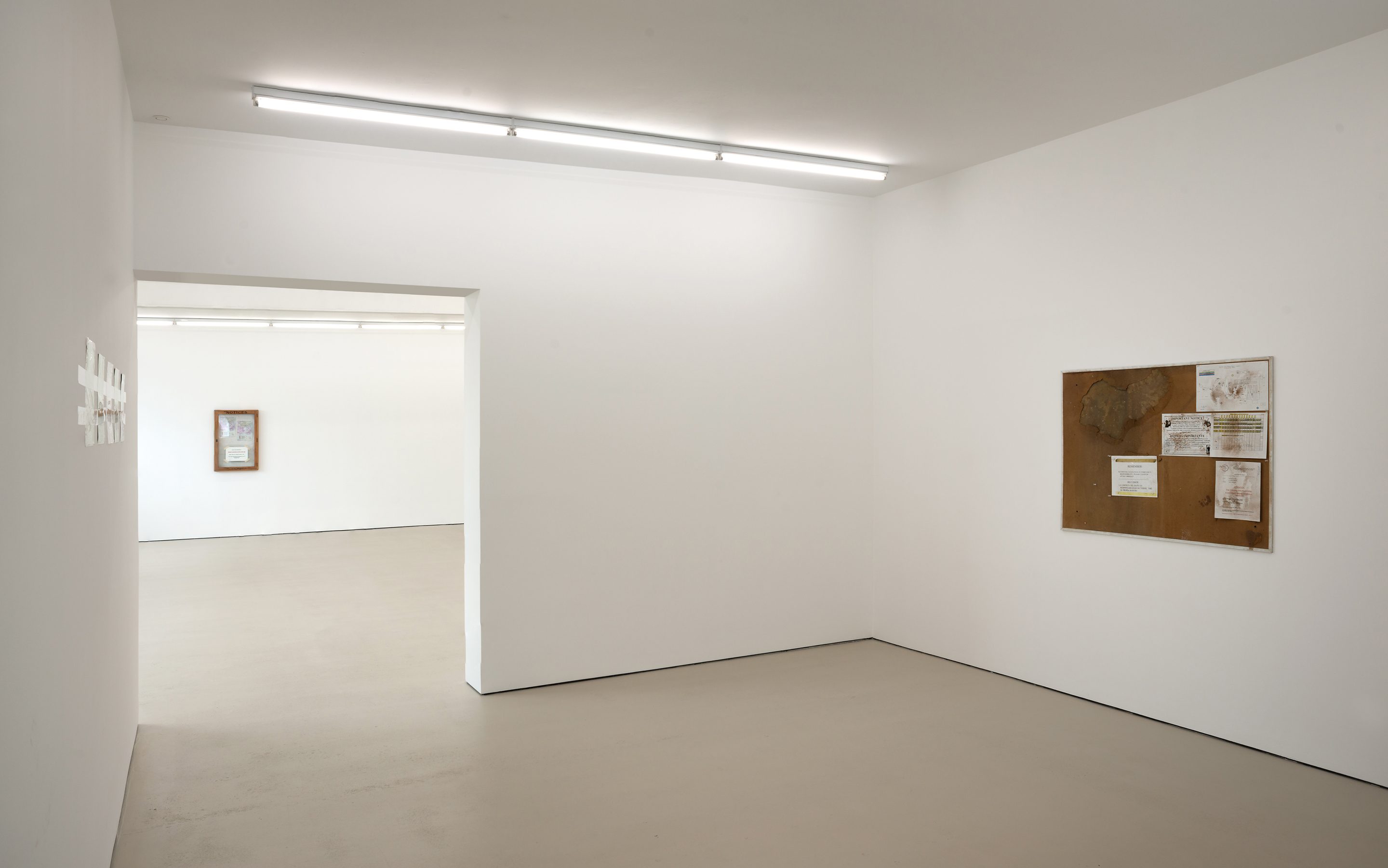
Fiona Connor
Brick, Cane and Paint, 2016
installation view: Hopkinson Mossman, Auckland
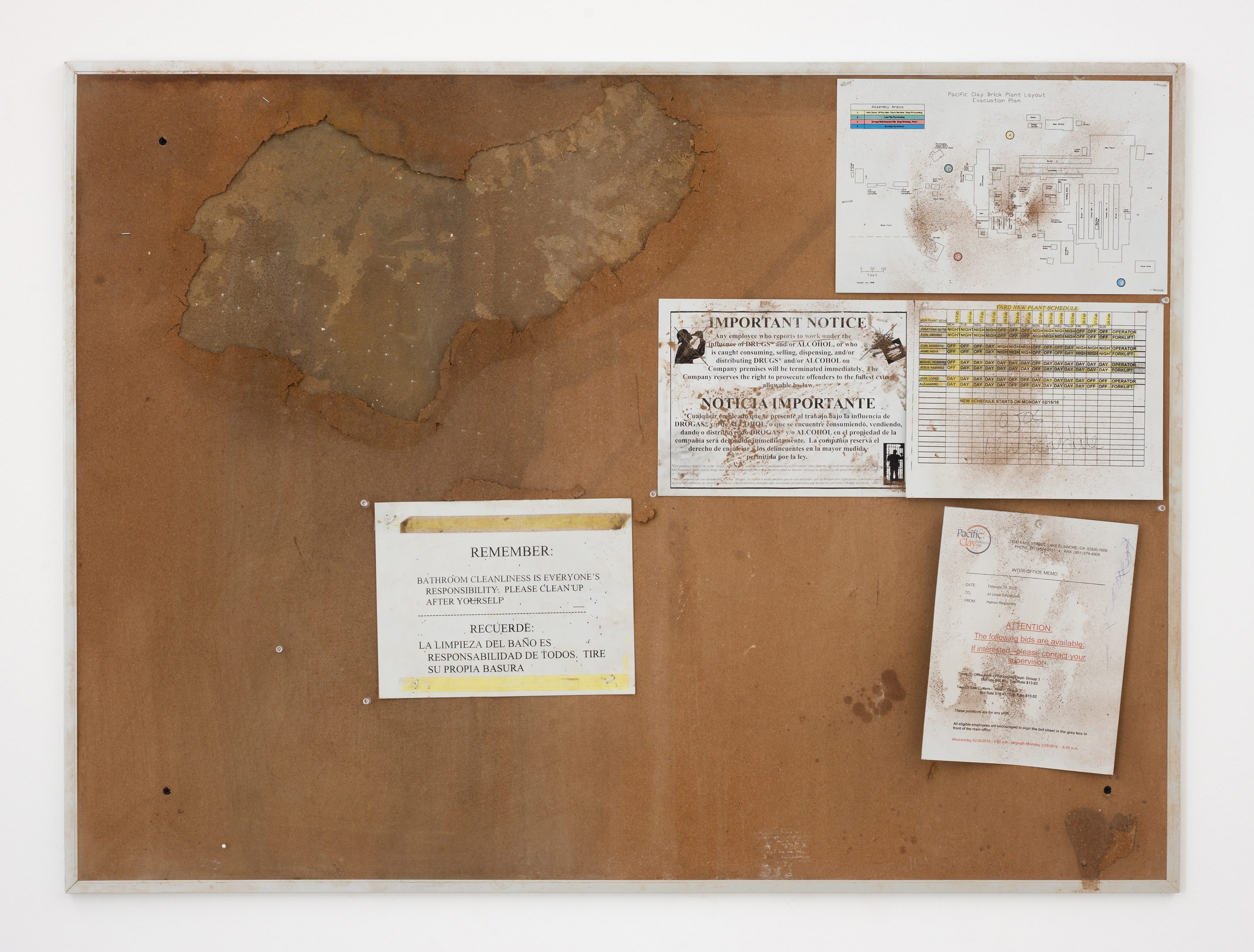
Fiona Connor
Notice Board (Pacific Clay) #2, 2016
corkboard, paint, silkscreen and UV on aluminum plates, pins, tape
915 x 1220mm
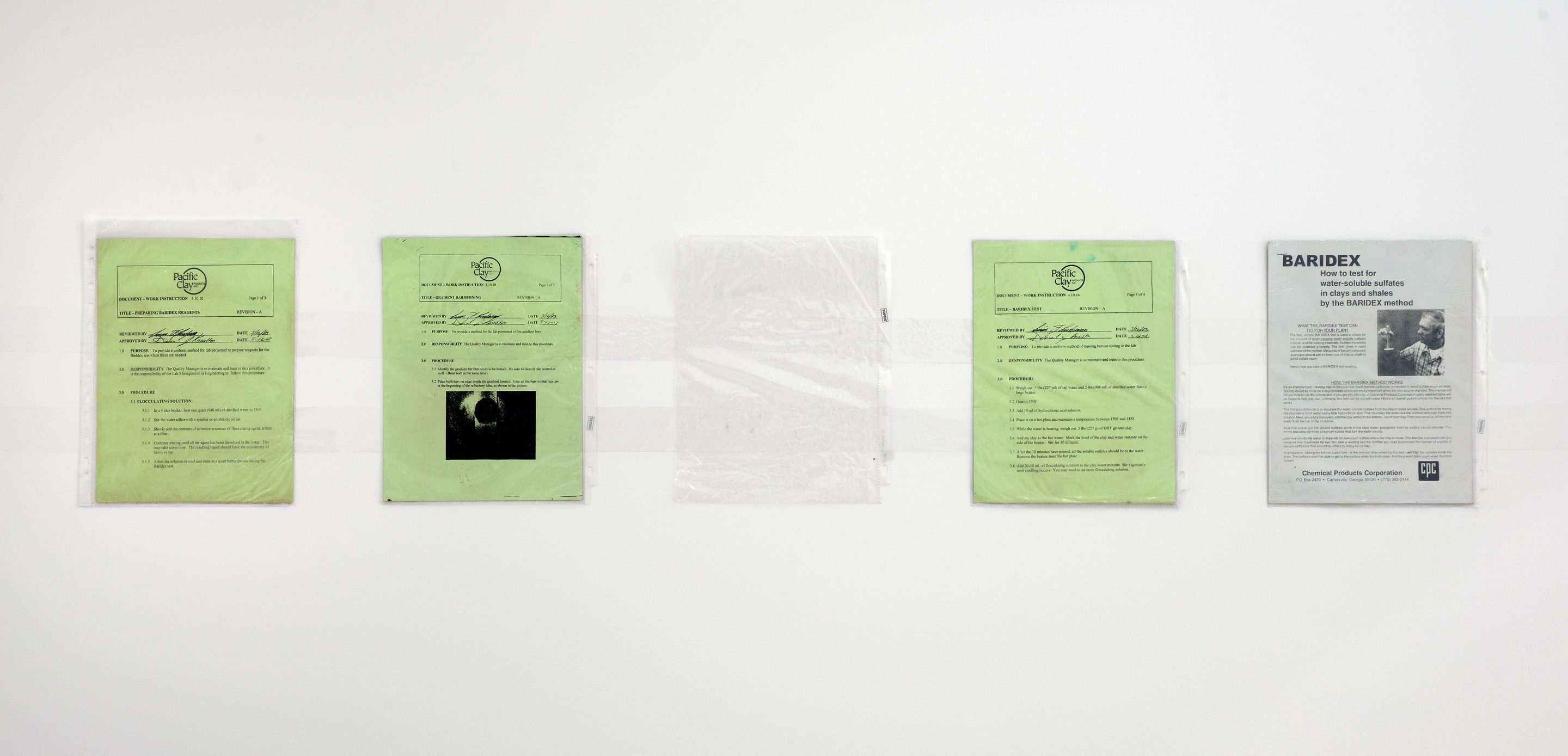
Fiona Connor
Notice Board (Pacific Clay) #1, 2016
plastic sleeves, silkscreen on aluminum plates, tape
1830 x 610mm overall (hanging height 1520mm floor to base)

Fiona Connor
Brick, Cane and Paint, 2016
installation view: Hopkinson Mossman, Auckland

Fiona Connor
Brick, Cane and Paint, 2016
installation view: Hopkinson Mossman, Auckland
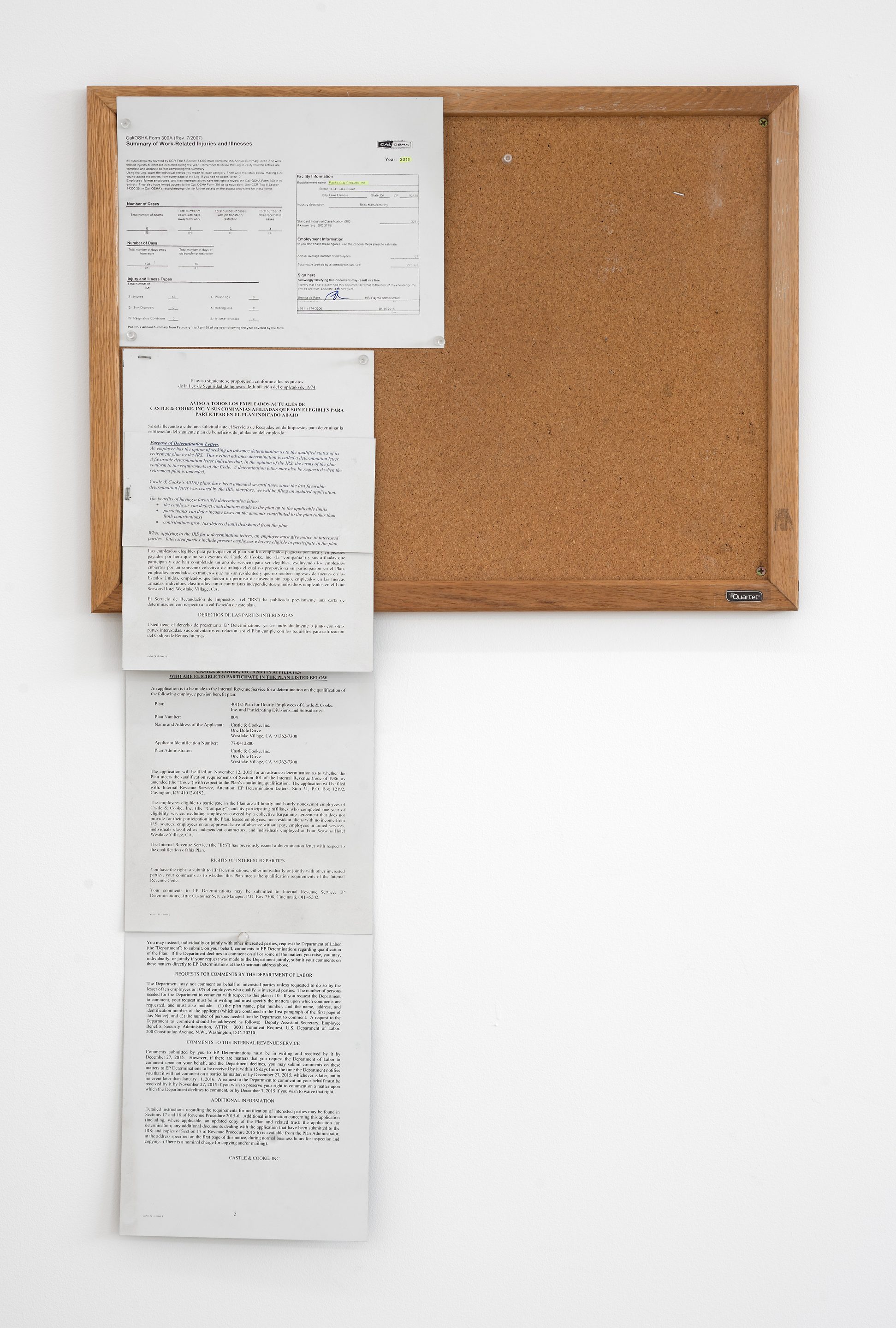
Fiona Connor
Notice Board (Pacific Clay) #3, 2016
corkboard, silkscreen on aluminum plates, pins
460 x 610mm (hanging height 1320mm floor to base)
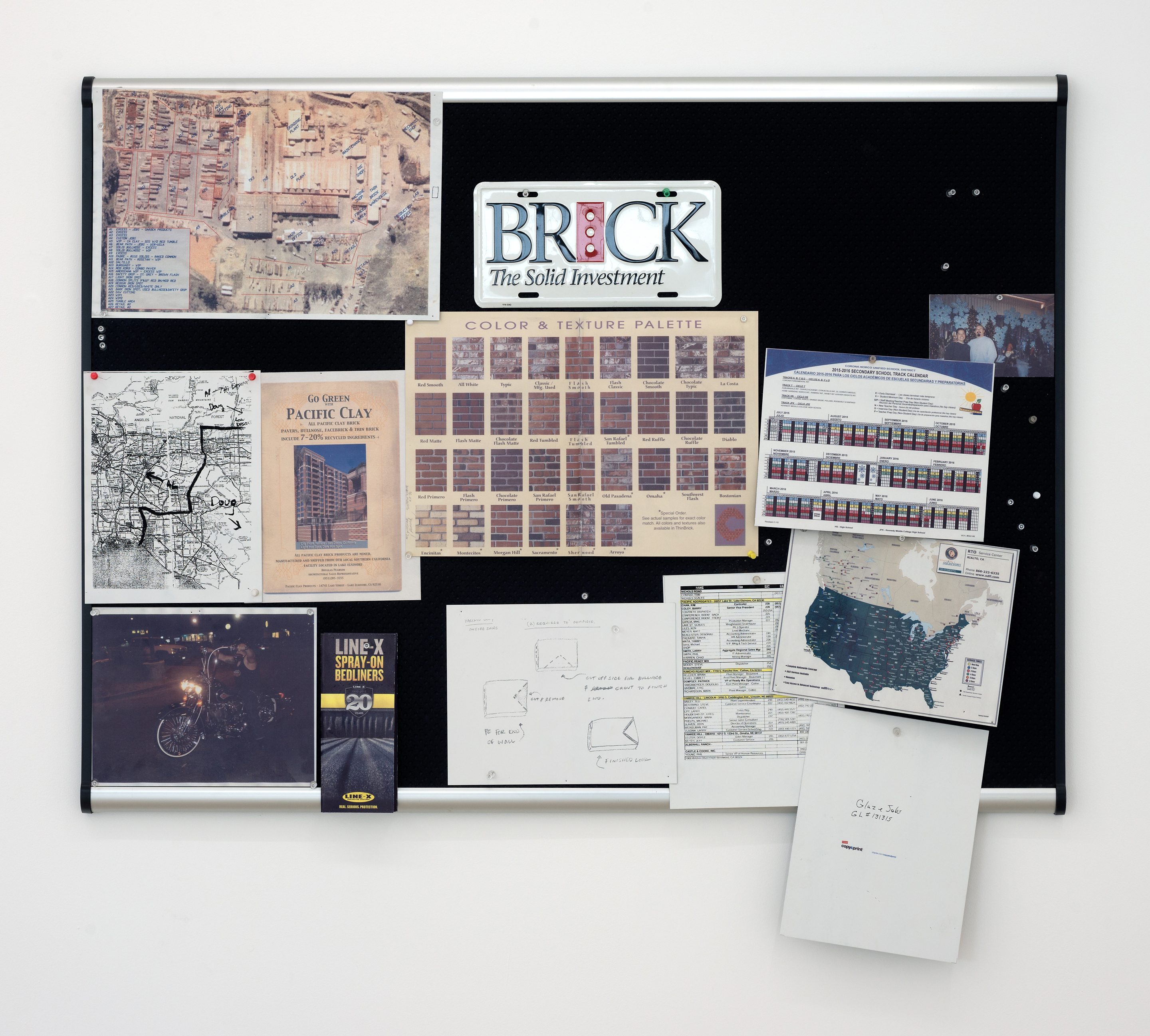
Fiona Connor
Notice Board (Pacific Clay) #5, 2016
foam pin board, silkscreen and UV print on aluminum plates, pins
915 x 1220mm
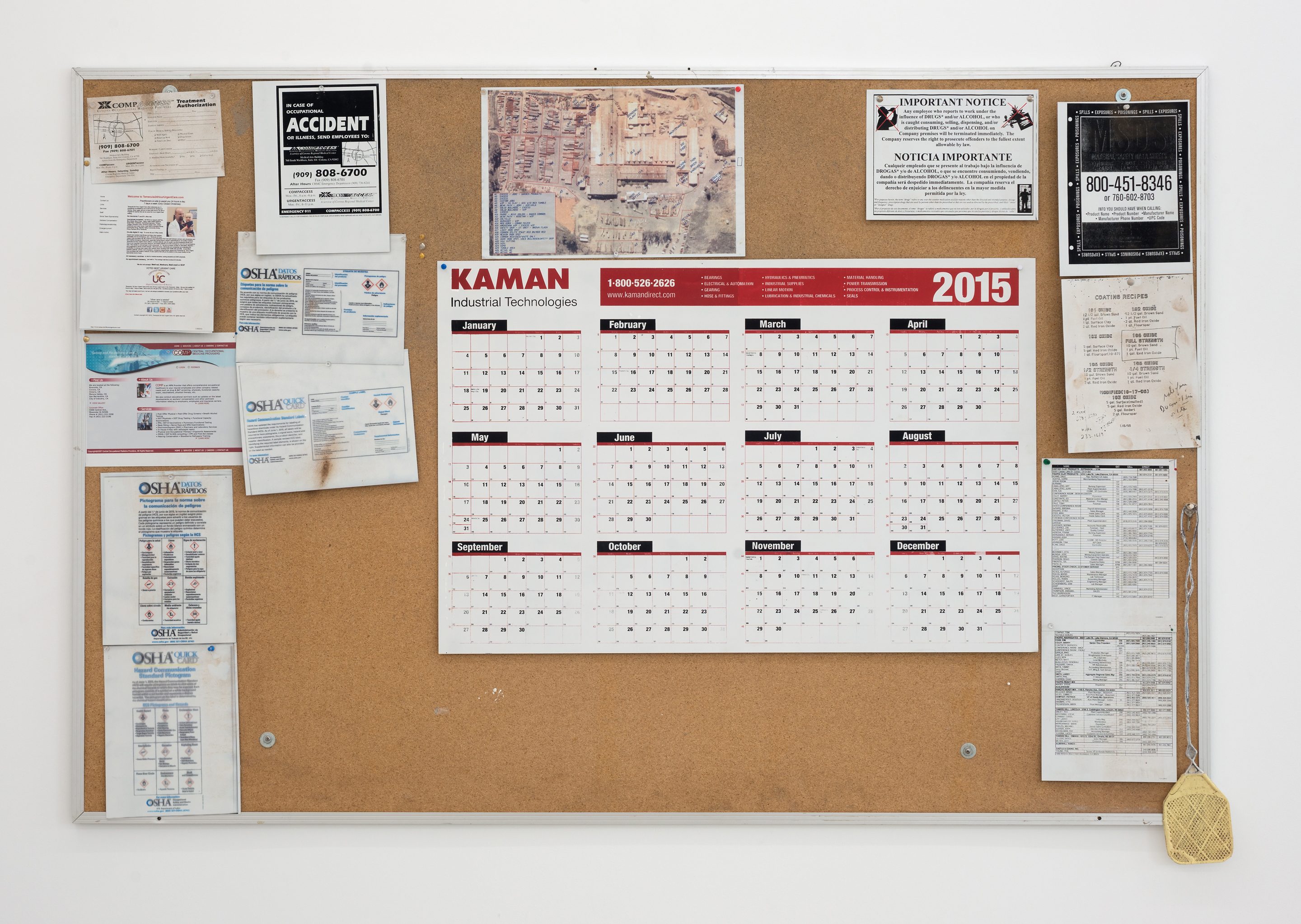
Fiona Connor
Notice Board (Pacific Clay) #4, 2016
corkboard, cast resin, key, silkscreen and UV print on aluminum plates, pins
1220 x 1830mm overall
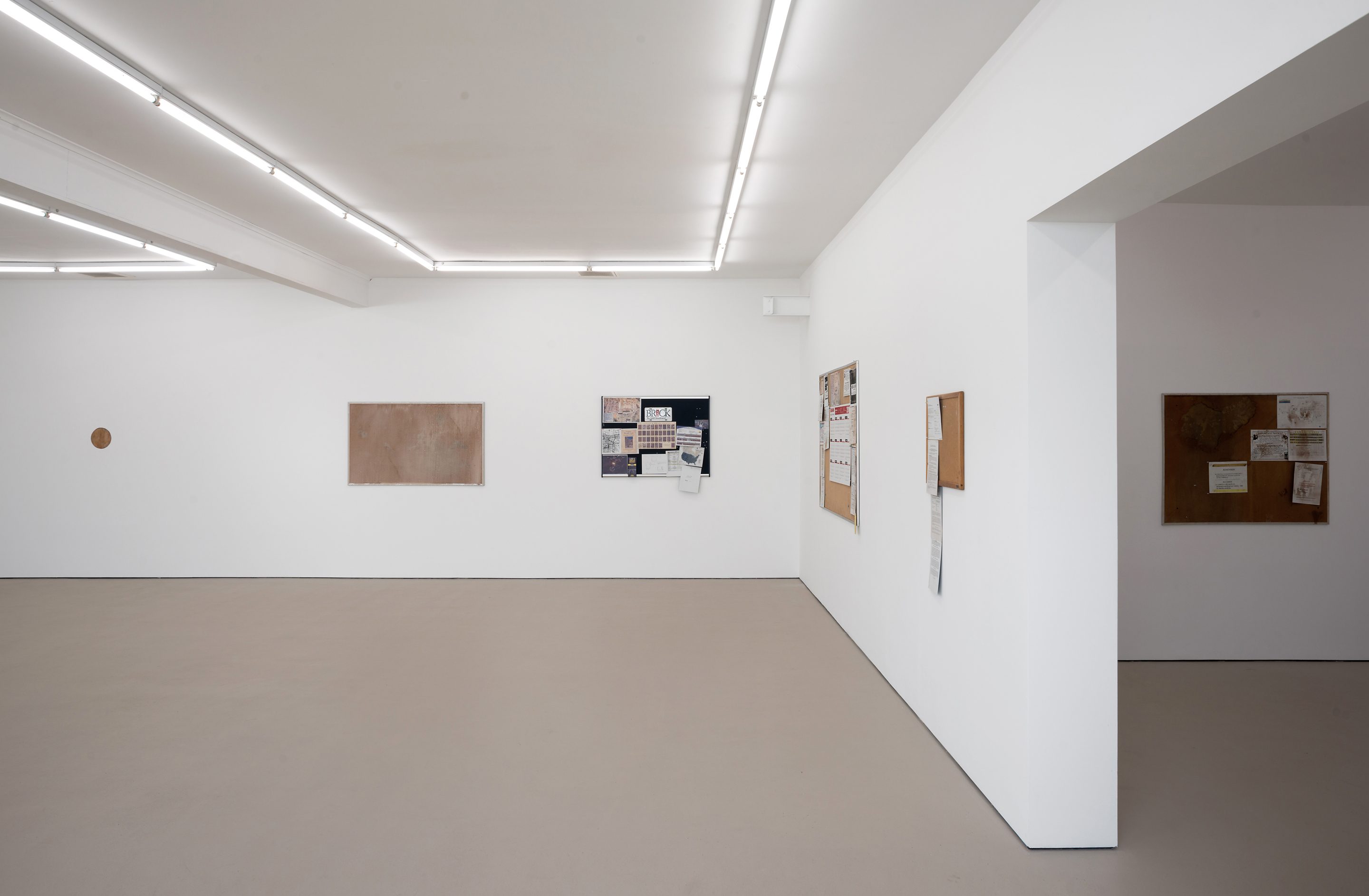
Fiona Connor
Brick, Cane and Paint, 2016
installation view: Hopkinson Mossman, Auckland
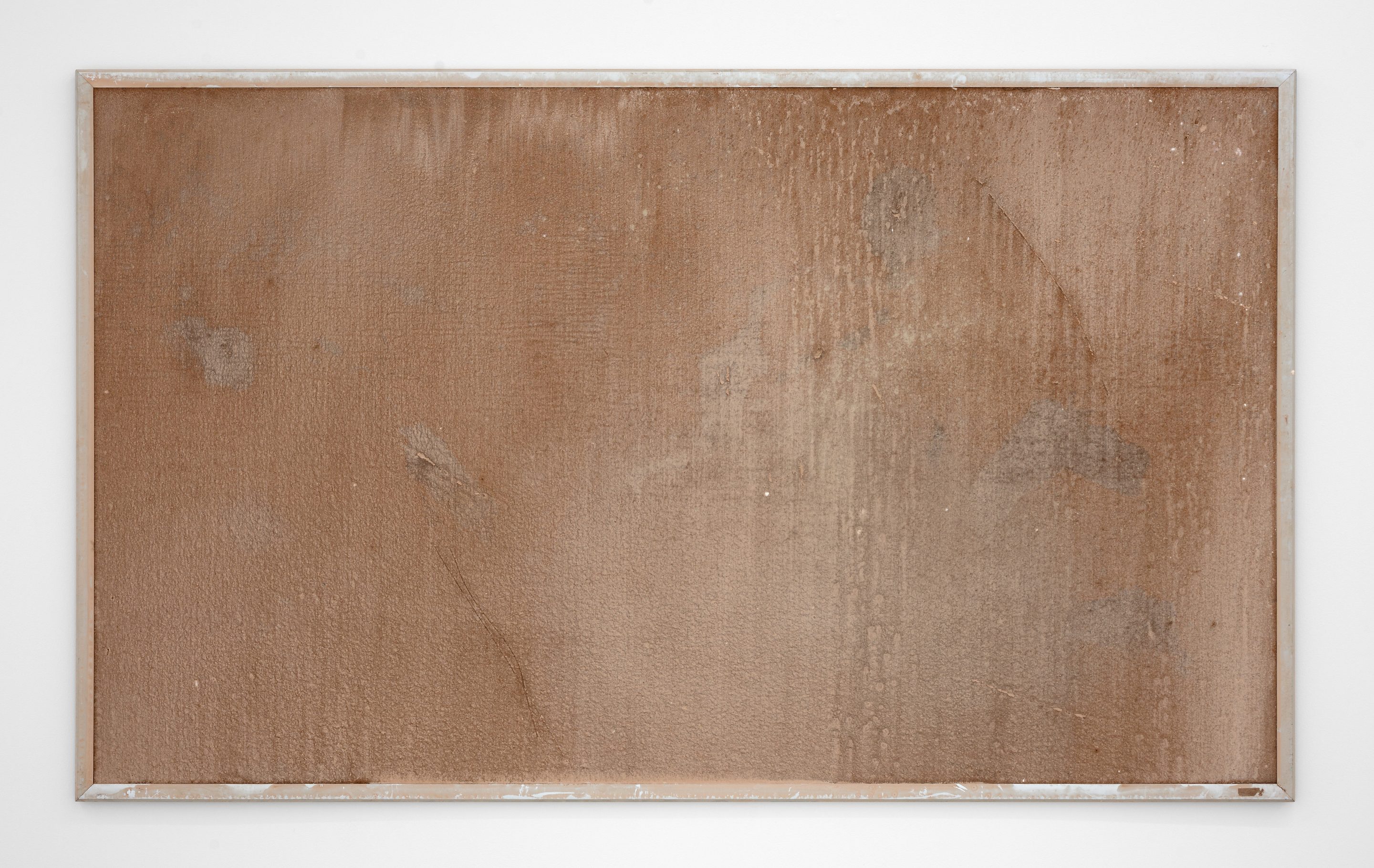
Fiona Connor
Notice Board (Pacific Clay) #6, 2016
corkboard, paint, pins
1220 x 1520mm

Fiona Connor
Insert (chopping board) #7, L1/19 Putiki St, Auckland, 2016
chopping board, incised wall
installation dimensions vary (board: 250 x 250mm)
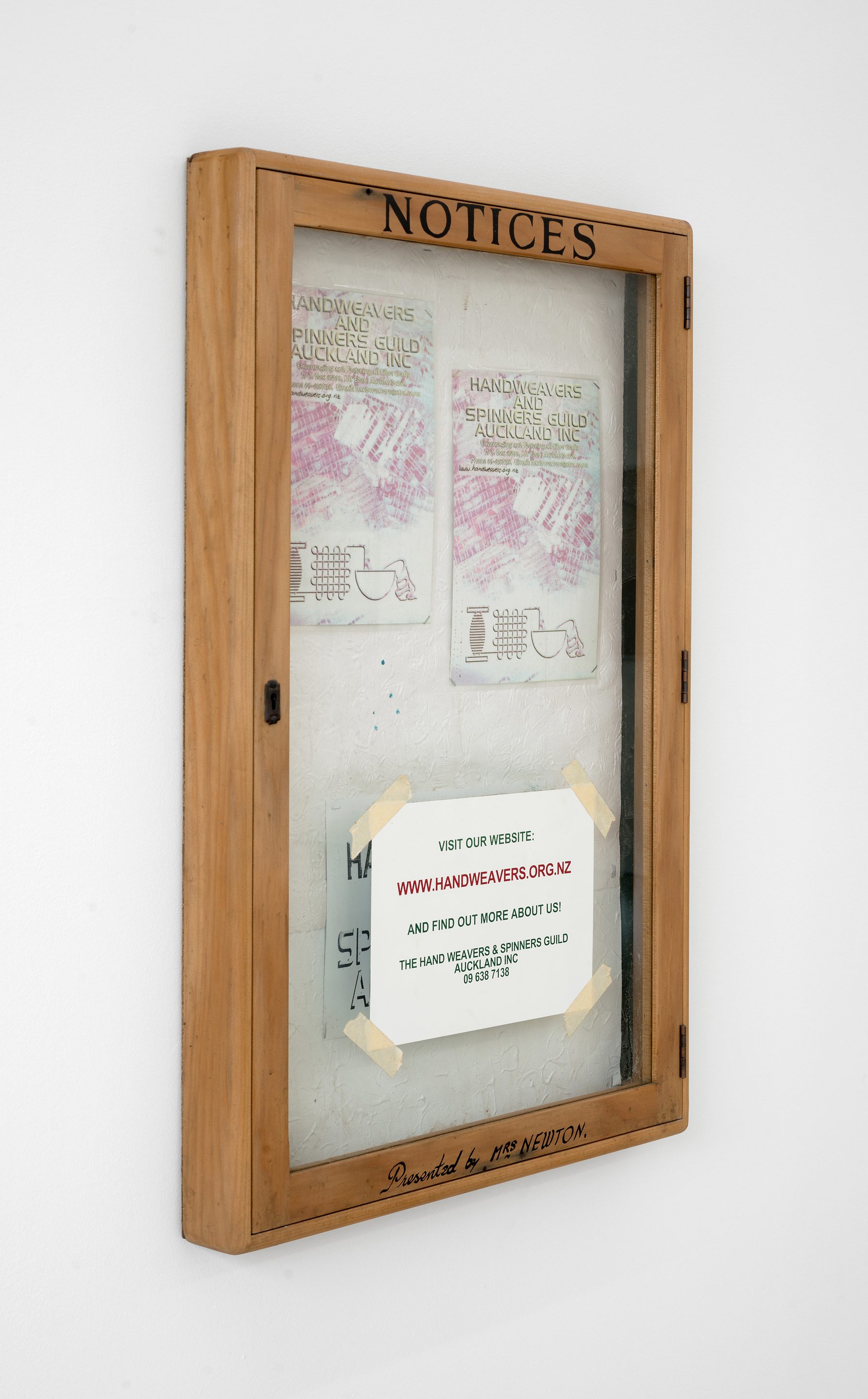
Fiona Connor
Notice Board (Handweavers and Spinners Guild) #1, 2016
custom notice board, cast resin, silkscreen print on aluminum plates, pin, staples
900 x 600 x 80mm

Fiona Connor
Brick, Cane and Paint, 2016
installation view: Hopkinson Mossman, Auckland
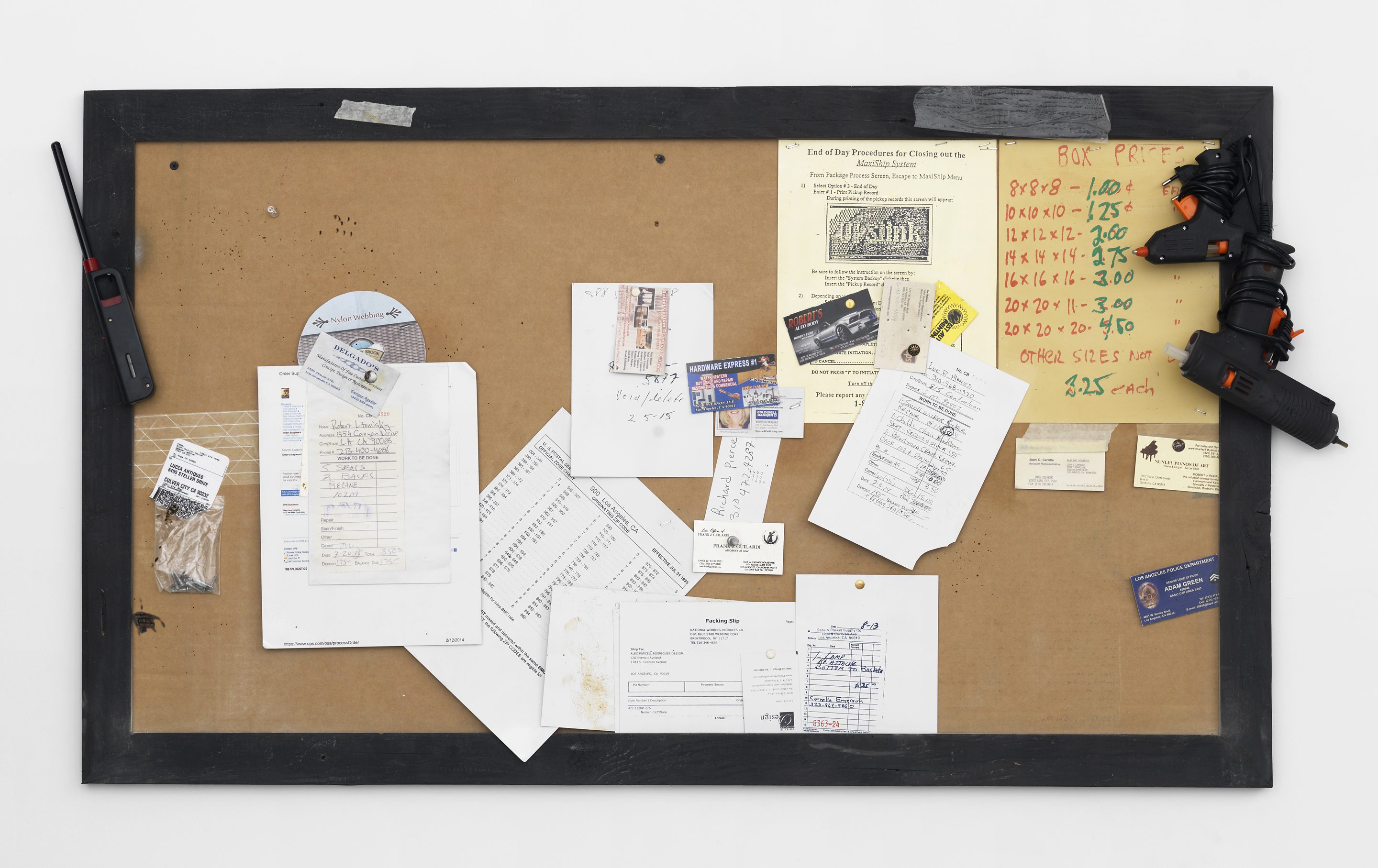
Fiona Connor
Notice Board (Cane and Basket Supply) #3, 2016
custom bulletin board, silkscreen and UV print on aluminium plates, glue guns, BBQ lighter, pins, tape, staples
690 x 1250mm
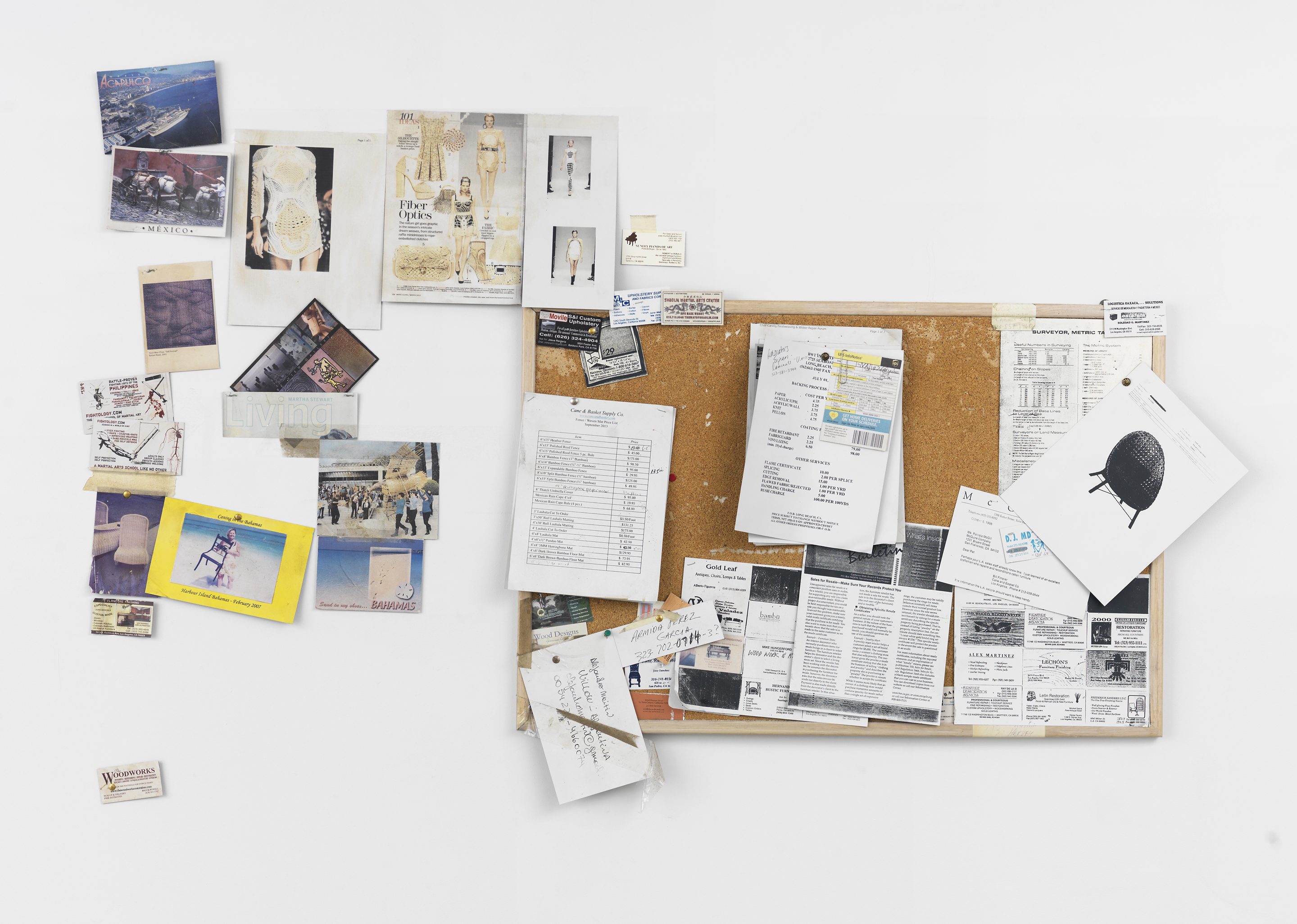
Fiona Connor
Notice Board (Cane and Basket Supply) #2, 2016
corkboard, silkscreen and UV print on aluminium plates, pins, tape and staples
1060 x 1750mm
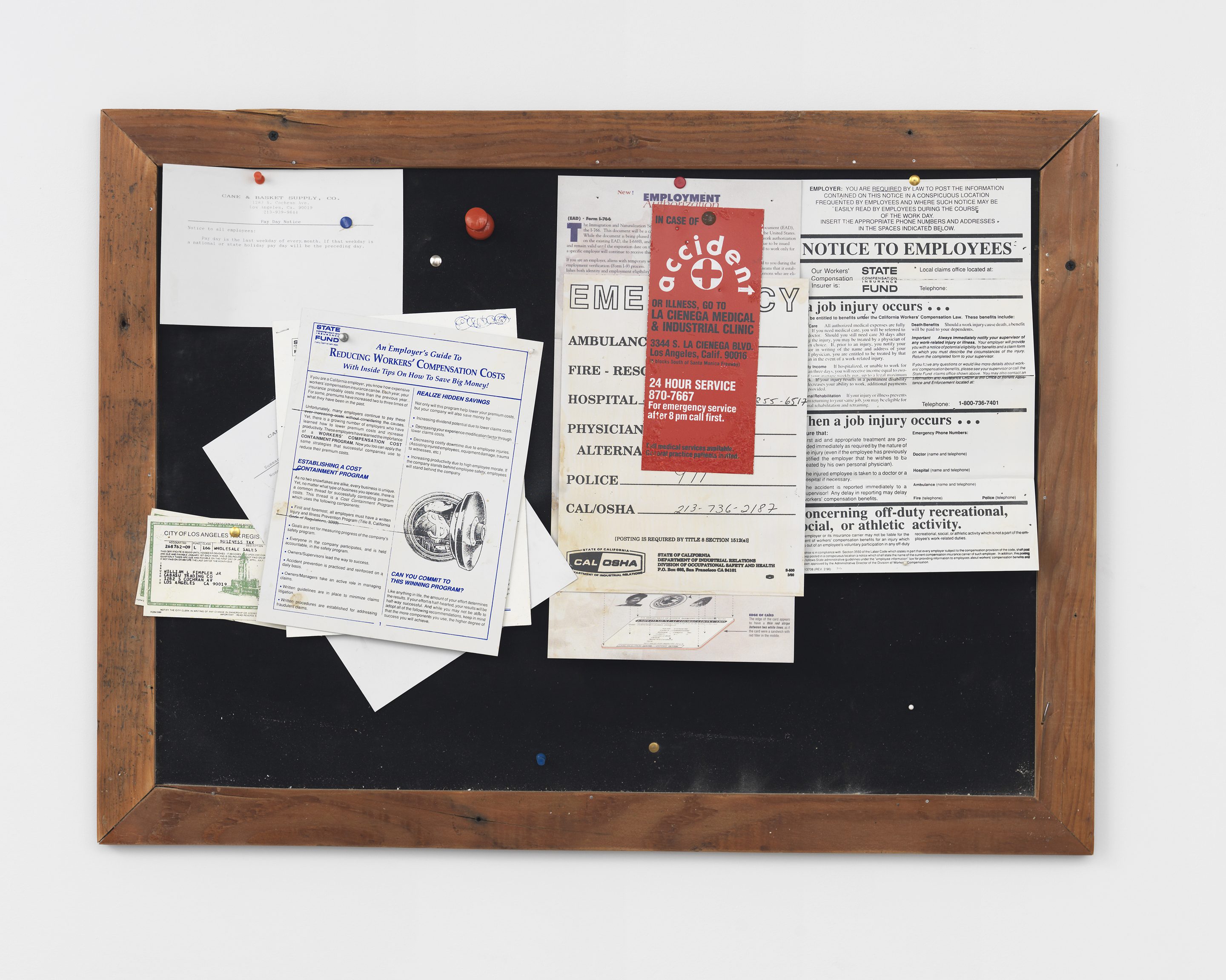
Fiona Connor
Notice Board (Cane and Basket Supply) #1, 2016
custom bulletin board, silkscreen print on aluminium plates, pins, staples
890 x 660mm
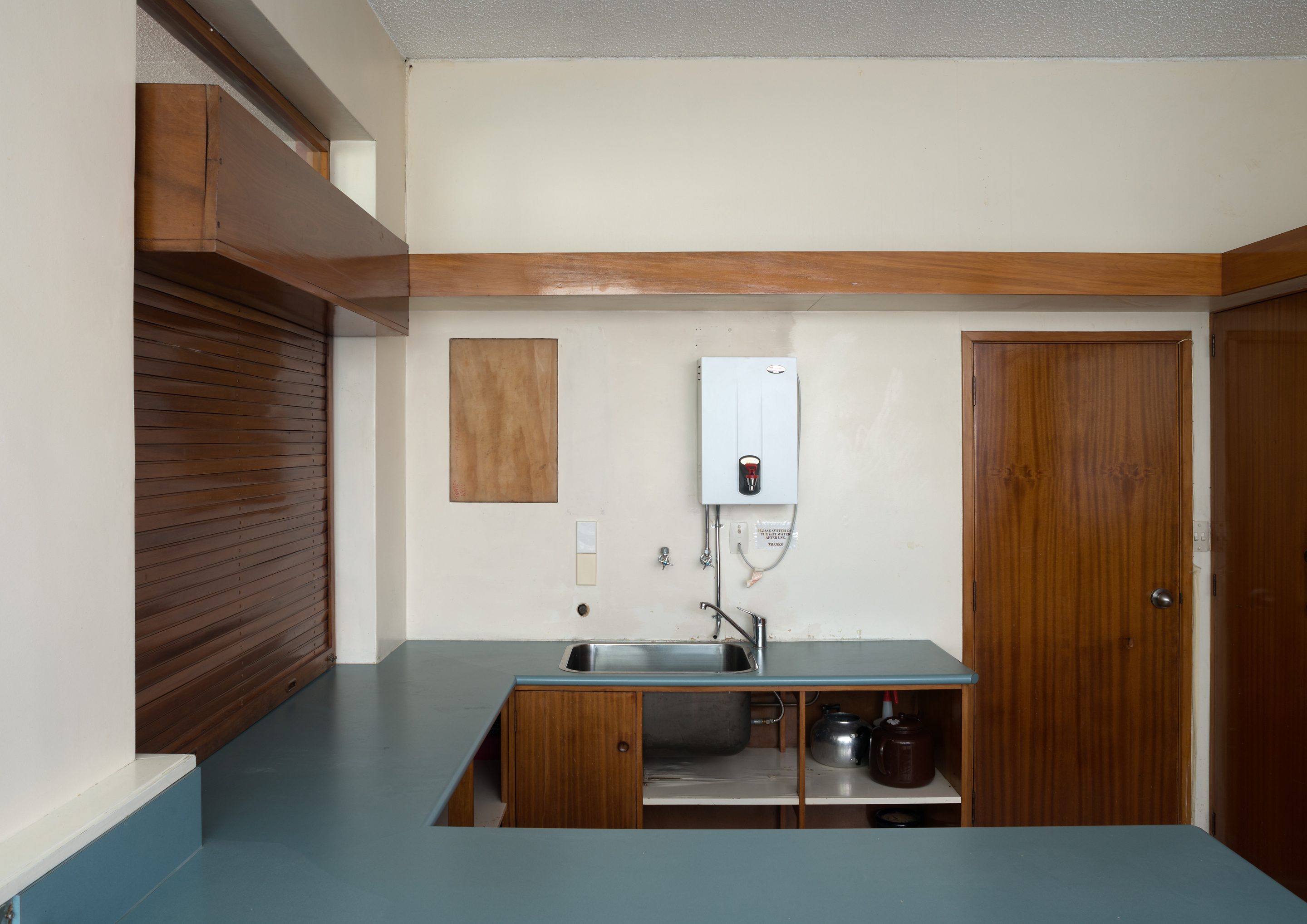
Fiona Connor
Insert (chopping board) #5, 147 Great North Rd, Auckland, 2016
chopping board, incised wall
site specific multiple, installation dimensions vary
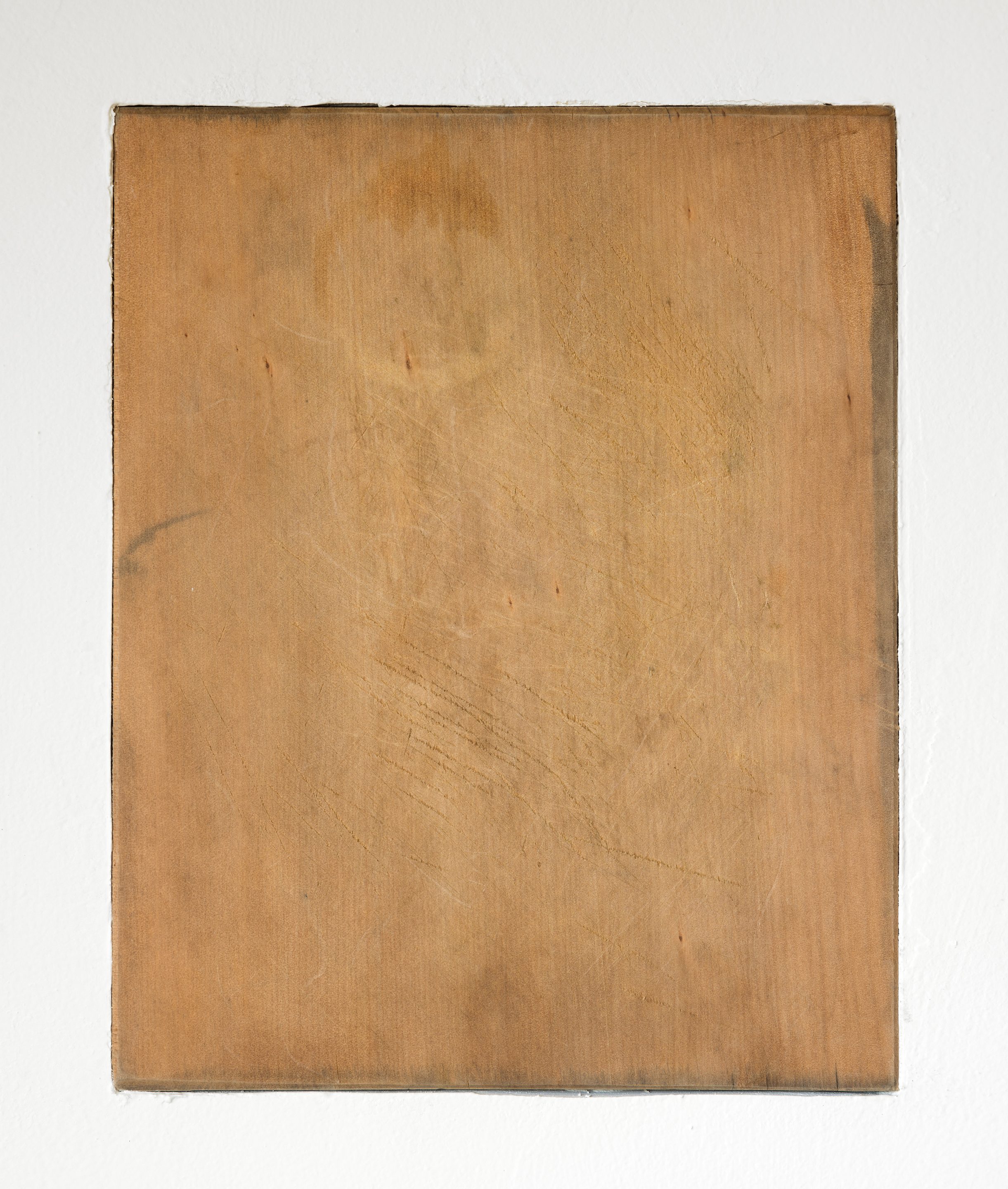
Fiona Connor
Insert (chopping board) #4, 21 Ponsonby Tce, Auckland, 2016
chopping board, incised wall
site specific multiple, installation dimensions vary
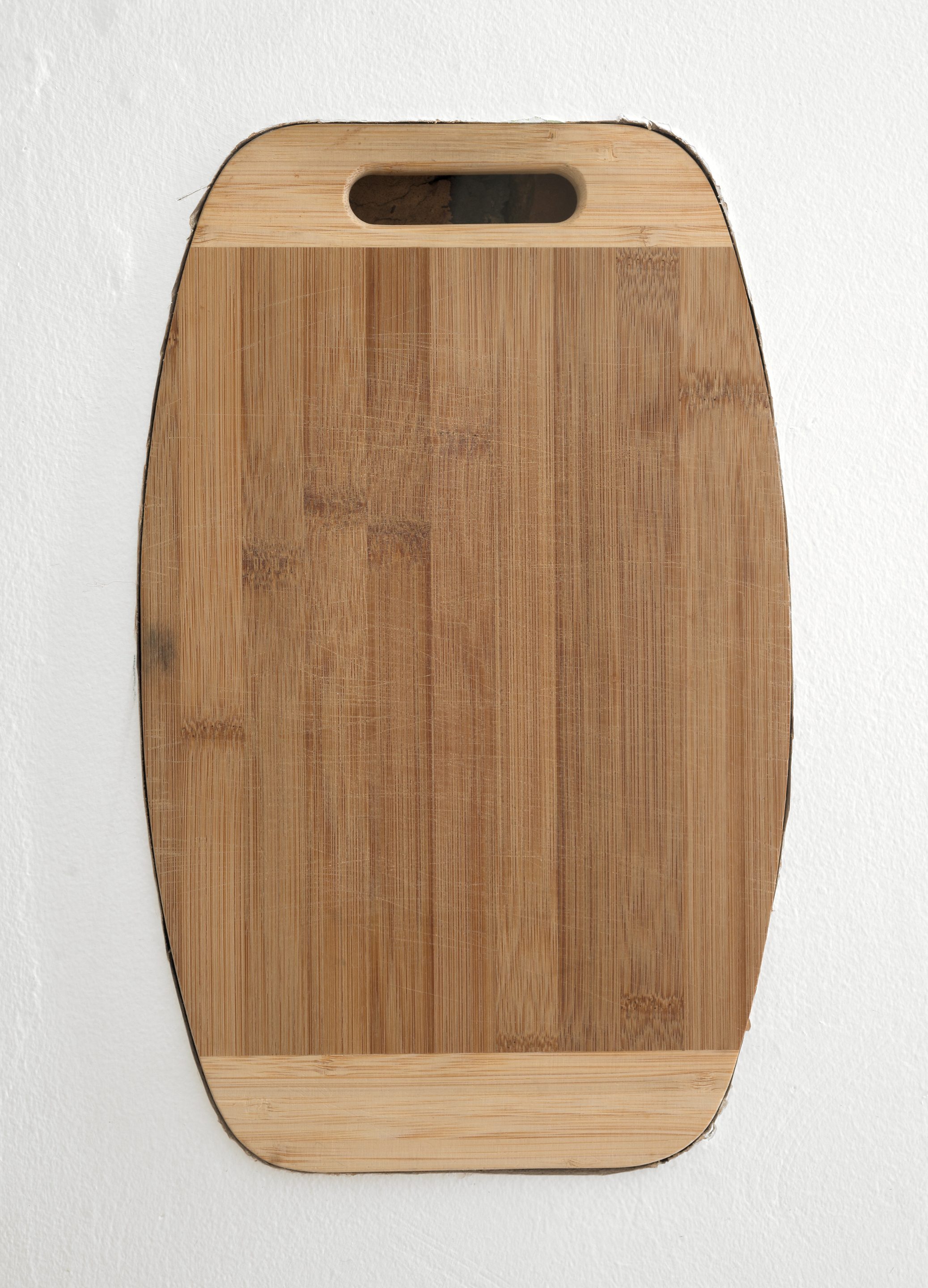
Fiona Connor
Insert (chopping board) #3, L1/454 Karangahape Rd, Auckland, 2016
chopping board, incised wal
site specific multiple, installation dimensions vary
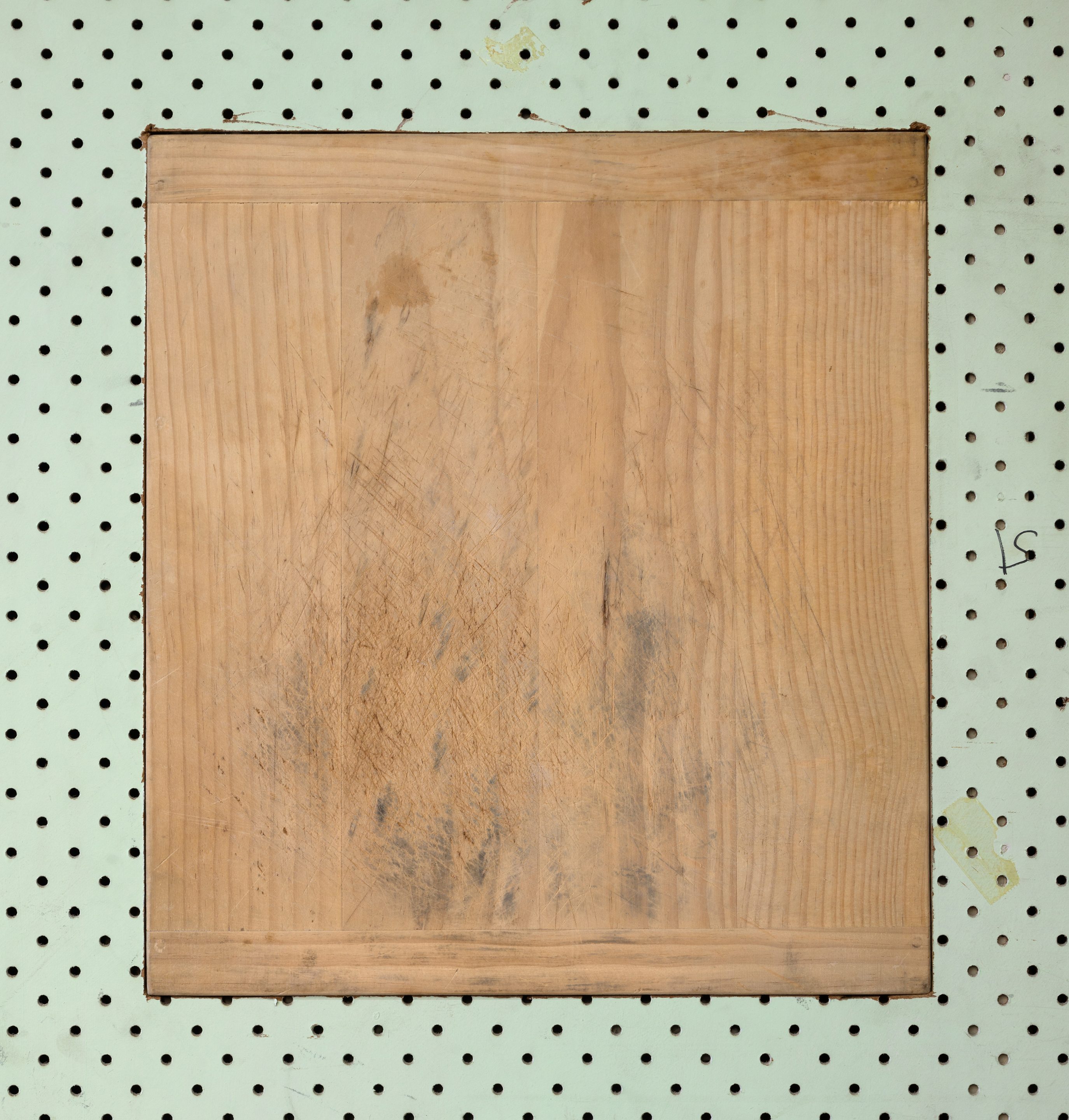
Fiona Connor
Insert (chopping board) #5, 134 Great North Rd, Auckland, 2016
chopping board, incised wall
site specific multiple, installation dimensions vary
Fiona Connor
Brick, Cane and Paint
11 Nov – 23 Dec 2016
Auckland
“We think of decay and repair as the scars and traces of deterioration, but it is also merely the marks of time, and the accumulation of stories that fuse with the object. Fiona Connor’s work points to an elsewhere (which in the case of the kitchen wall is very nearby, in the case of the drinking fountain a short walk down the street) and yet returns us to a present, a here and now, where we can unfold and open up possible readings and interpretations of the piece. This movement between spaces (actual and imaginary), and between and among different temporalities built into the work, structures her work and holds it in dynamic tension.” (1)
Hopkinson Mossman is pleased to present Brick, Cane and Paint, a solo exhibition by Fiona Connor.
For Brick, Cane and Paint, Connor presents work from three new notice board projects (quoted from three sites: a brick plant and a cane factory in Los Angeles, and a weavers guild in Auckland) alongside a new series titled Insert (Chopping Board).
Where previously Connor’s work has focused on bulletin boards from public spaces (such as city parks, libraries, community centres etc.), the sculptures in Brick, Cane and Paint represent activity at specific sites of production, with content generated by a fixed group of individuals. Notice Board (Pacific Clay), the set of six boards in the small and large galleries at Hopkinson Mossman, are quoted from Pacific Clay; a brick plant frequented by the artist. The Pacific Clay boards are punctuated by a single piece from the Handweavers and Spinners Guild in Mt Eden (a community organization close to the artist’s childhood home), and the boards that hang in the gallery’s office spaces are from Cane and Basket Supply, a workshop near the artist’s Los Angeles studio.
Each board is photographed in-situ then meticulously re-constructed. The changeable displays are reproduced by Connor for perpetuity; paper materials (such as advertisements, flyers, wanted or lost-and-found notices) are rendered in aluminum, where fittings (such as thumb-tacks, frames, latches) are produced using the same materials as if commercially manufactured, then arranged according to the originals. Connor’s notice boards are cumulative compositions complete with trompe l’oeil environmental effects; deterioration, accumulations, incidental marks, and signs of use. Connor builds up a patina of age through a variety of painterly and sculptural techniques. Her methodical process includes physical re-enactment –rough scribbles are gouged, pins pierce, sellotape accumulates or leaves residue where removed, patches are faded, water marks dribbled – to trace or map human activity upon these surfaces.
The community serviced by each bulletin board is determined by place and proximity, as opposed to their digital counterparts (familiarized by skeuomorphic design) where content is generated through endlessly linked search terms with extensive social, cultural and geographical reach. In the face of advanced, more immediate, and immaterial means of communication, Connor’s notice boards both celebrate the “social networks of sites experienced IRL only”, and function as relics documenting their own obsolescence. (2)
Insert (Chopping Board) #7 is a chopping board – replete with scars and residues built up or worn down from use – installed directly into the wall of the gallery. For the duration of the exhibition four other chopping boards will be installed across various sites in Auckland including the gallery’s neighbour, Johnston Press, and in the homes of the artist’s collaborators. The chopping boards are all ready-made, as opposed to re-constructed by the artist, and native to the site of their installation.
Insert (Chopping Board) extends Connor’s ongoing exploration into the social lives of objects. The surface of each board makes explicit the durational impact of multiple forces; they bear scars from a cacophony of daily pressures, most significantly knife cuts from food production and consumption. Connor’s is a revelatory gesture; by embedding the boards in the wall an otherwise back-of-house functional implement becomes an object for contemplation (and draws unavoidable art historical comparisons), allowing us to recognise the intimacy (and in this case, violence) in the incidental impact of the body on things.
In introducing a ready-made into the gallery beside the simulacral notice boards Connor disrupts a complex, although by now familiar, dynamic between faux and real in her work, and adjusts our focus to questions of labour, and the typically invisible social systems at play in art production. Discussing the first Insert (Chopping Board) from Laurel Doody (the artist’s project space in her Los Angeles apartment) Leslie Dick writes:
“The insertion of the chopping board into the wall acknowledges its use for domestic and gallery-related food preparation, and removes it from either, in order to articulate the different ways that the labour (kitchen work) of the artist was a key component in the multi-layered project (living, making, and showing art work) that was Laurel Doody … The shape of this chopping board is idiosyncratic and worn; it is a used object, and as such points to a valuation of the past, the anachronistic object. What comes through is a sense that the board is a small memorial (wall plaque?) to the unrecorded conversations, laughter, and forgotten encounters of these social situations, large and small.” (3)
Fiona Connor (born 1982, Auckland) competed her BFA/BA at Univeristy of Auckland’s Elam School of Fine Arts in 2004. She has studied at University of California in San Diego and University of Barcelona, and most recently completed her MFA at California Institute of the Arts (CalArts) in Los Angeles (2011). Recent solo exhibitions include: On What Remains Part 2, Lisa Cooley, New York (2016); Community Notice Board, 1301PE, Los Angeles (2015); On what remains, Lisa Cooley, New York (2015); Can Do Academy, Hopkinson Mossman, Auckland (2014); Wall Works, Monash University Museum of Art (MUMA), Melbourne (2014); Bare Use, 1301PE, Los Angeles (2013); and Untitled (Mural Design), Dunedin Public Art Gallery, Dunedin (2012). Connor’s work has been shown extensively in major group exhibitions throughout New Zealand and internationally. In 2011 Connor received an Award for Partonage donation from Chartwell Trust and the Arts Foundation of New Zealand, and in 2010 she was a finalist in the Walters Prize. Brick, Cane and Paint is Connor’s third solo exhibition at Hopkinson Mossman.
References:
1. Leslie Dick, “Drift: time in Fiona Connor’s sculpture”, 2016
2. Olivian Cha, Fiona Connor, Artforum Critic’s Pick, 2015 (www.artforum.com/picks/id=50365)
3. Leslie Dick, “Drift: time in Fiona Connor’s sculpture”, 2016